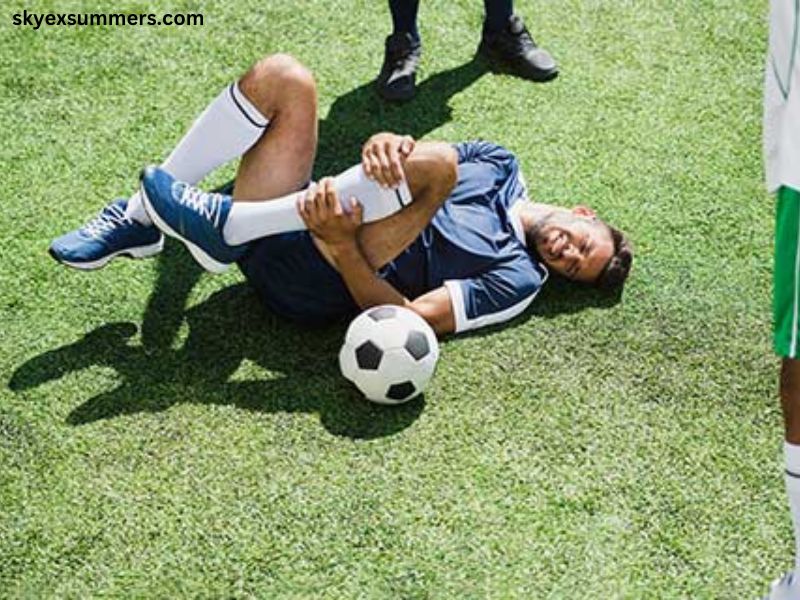Sports have long been celebrated for their ability to enhance physical fitness, foster teamwork, and develop mental resilience. However, with the physical demands and competitive intensity of athletic activities, injuries are often an unavoidable consequence. While some injuries occur frequently across various sports, others are less common or even rare. Understanding the difference between common and uncommon injuries can be crucial for athletes, coaches, and medical professionals in managing risks and improving safety protocols.
This article aims to explore common injuries in sports and help identify which injuries are less prevalent. We will delve into the nature of these injuries, their causes, and how athletes can reduce their risk of suffering from them. Additionally, we will analyze which of the following choices is not a common injury in sports.
Common Sports Injuries
1. Sprains and Strains
Sprains and strains are among the most frequent injuries in sports, occurring in almost every athletic activity. While they are often used interchangeably, they are distinct injuries:
- Sprains refer to the stretching or tearing of ligaments, the tough bands of tissue connecting bones at joints. The most common sites for sprains are the ankles, knees, and wrists.
- Strains involve injuries to muscles or tendons, which connect muscles to bones. Strains are common in the lower back and hamstring muscles.
Both sprains and strains are caused by overstretching, twisting, or overexerting muscles, tendons, or ligaments. Sports that involve a lot of sudden movement, like basketball, soccer, or tennis, often lead to these types of injuries.
Symptoms of sprains and strains can include pain, swelling, bruising, and difficulty moving the affected joint or muscle. Treatment generally involves rest, ice, compression, and elevation (RICE), and more severe cases may require physical therapy or even surgery.
2. Fractures
Fractures, or broken bones, are another common sports injury, particularly in contact sports such as football, rugby, and hockey. A fracture occurs when a bone is subjected to a force greater than it can withstand, causing it to break. Fractures can range from minor stress fractures to complete breaks.
Common fracture sites in athletes include the arms, legs, and collarbone. For example, cyclists and runners often suffer from stress fractures in their legs or feet due to repetitive impact on hard surfaces.
Fractures usually present with severe pain, swelling, deformity, and the inability to move the affected area. Depending on the severity, treatment may involve immobilization with a cast or brace, as well as surgery to realign the bones.
3. Dislocations
Dislocations occur when a bone is forced out of its normal position in a joint. This type of injury is common in contact sports like football, basketball, and wrestling. The shoulder is the most frequently dislocated joint in sports because of its wide range of motion and vulnerability to impact. Other common dislocations occur in the fingers, elbows, and knees.
Symptoms of a dislocation include intense pain, visible deformity, and an inability to move the joint. Immediate medical attention is necessary to realign the bone and prevent long-term damage. Afterward, rehabilitation is often required to restore mobility and strength.
4. Concussions
Concussions are a form of traumatic brain injury caused by a blow to the head or body that causes the brain to move rapidly within the skull. Contact sports such as football, hockey, and boxing are notorious for causing concussions, but they can occur in almost any sport that involves falls, collisions, or strikes to the head.
Concussion symptoms can include headache, dizziness, confusion, nausea, sensitivity to light, and memory problems. Some athletes may not realize they have suffered a concussion because symptoms can be delayed. It is crucial to recognize and properly manage concussions, as repeated concussions can lead to serious long-term health problems, including chronic traumatic encephalopathy (CTE).
Rest and avoiding physical activities are key to concussion recovery. Athletes are typically advised to return to sports gradually and only after receiving clearance from a medical professional.
5. Tendonitis
Tendonitis occurs when tendons, the tissues that connect muscles to bones, become inflamed due to overuse or repetitive motion. This injury is common in sports that involve repetitive movements, such as tennis, golf, or running. Some specific types of tendonitis in athletes include:
- Tennis elbow: Inflammation of the tendons in the elbow due to repetitive motion of the arm and wrist.
- Achilles tendonitis: Inflammation of the Achilles tendon in the lower leg, common among runners and basketball players.
Tendonitis causes pain, stiffness, and swelling in the affected area. Treatment generally includes rest, physical therapy, and anti-inflammatory medications.
Uncommon Sports Injuries
While the injuries listed above are common in a variety of sports, some injuries occur far less frequently. These injuries may result from rare accidents or are specific to certain extreme or niche sports. To address the question of “Which of the following choices is not a common injury in sports?”, let’s examine some injuries that fit this description.
1. Internal Organ Injuries
Injuries to internal organs, such as the kidneys, liver, or spleen, are quite rare in sports. However, they can occur in high-impact activities like motor racing, equestrian events, or extreme sports. These injuries are typically the result of severe trauma, such as a fall or collision.
Internal organ injuries can be life-threatening if not treated immediately, and they often require surgery. Athletes participating in sports where such injuries are a risk typically wear protective gear to minimize the danger.
While internal organ injuries are serious, they are not common in most mainstream sports, making them one of the less likely choices when asked which injury is uncommon in sports.
2. Eye Injuries
Eye injuries in sports are relatively rare but can be severe when they do occur. Sports like basketball, baseball, and racquetball can lead to eye injuries if a ball or other object strikes the eye. These injuries can range from minor scratches to the cornea to more severe issues like retinal detachment.
Most sports do not see a high frequency of eye injuries, and athletes in sports with a higher risk are often required to wear protective eyewear. Therefore, while eye injuries can be serious, they are not among the most common injuries in sports.
3. Dental Injuries
While dental injuries are more common in contact sports, they are not as frequent as sprains, strains, or fractures. Dental injuries, such as broken or knocked-out teeth, occur when an athlete’s face is struck by a ball, another player, or a piece of equipment.
Sports like hockey, football, and boxing are more likely to result in dental injuries. However, many athletes now wear mouthguards to protect their teeth, reducing the frequency of these injuries. Because of the protective measures in place, dental injuries are relatively uncommon compared to other types of sports injuries.
4. Injuries Related to Altitude
Injuries related to altitude, such as altitude sickness or hypoxia, are uncommon in most sports, as they are usually associated with extreme environments like mountain climbing or high-altitude marathons. Athletes at high altitudes may experience difficulty breathing, dizziness, and other symptoms related to a lack of oxygen.
Since most competitive sports are played at normal altitudes, injuries caused by high altitude are not common. However, they can be a concern for athletes who train or compete at extreme elevations, such as those preparing for high-altitude races or events like Mount Everest expeditions.
Conclusion
When asked which of the following choices is not a common injury in sports, the answer likely lies in rarer or more specific injuries such as internal organ injuries, eye injuries, dental injuries, or altitude-related injuries. While injuries like sprains, fractures, and concussions are common across many sports, some injuries are limited to particular activities or environments.
Athletes and coaches can reduce the risk of injury by ensuring proper training, using appropriate protective gear, and following safety protocols. Ultimately, while injury is a part of the sporting experience, understanding which injuries are most and least common can help guide prevention and treatment efforts.



